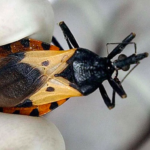Cutting-edge research has unveiled a promising avenue for the development of 3D-printed living skin and potentially hair follicles, with fat tissue emerging as a critical component in the process. Led by Ibrahim T. Ozbolat, a professor at Penn State, an international team of researchers has successfully utilized fat cells and their supporting structures to address injuries in rats, a groundbreaking advancement with implications for reconstructive facial surgery and hair growth treatments in humans.
Published in Bioactive Materials and recently granted a patent by the U.S. Patent and Trademark Office, the study demonstrates the potential of bioprinting technology to repair damaged skin and promote hair growth. Unlike previous attempts that focused on thin layers of skin, Ozbolat’s team is the first to intraoperatively print a full system of multiple skin layers, including the hypodermis, which plays a crucial role in wound healing and hair follicle generation.
Intraoperative bioprinting allows for immediate and seamless repair of damaged skin during surgery, paving the way for more effective reconstructive procedures. By harnessing the regenerative properties of fat tissue, the researchers aim to create more natural-looking outcomes in facial reconstruction for humans.
“We think that breast milk may play an important role in protecting the infants during the first six months of life from COVID,” said Dr. Vivian Valcarce, a former UF College of Medicine researcher who worked on this study. She now is an assistant professor at the University of Alabama at Birmingham. “We continue to see babies being hospitalized from COVID-19 infections.”
The study involved obtaining adipose tissue from patients undergoing surgery and extracting extracellular matrix and stem cells to create bioink components. These components were then loaded into a bioprinter, allowing for precise control over the printing process. By co-printing the matrix-fibrinogen mixture along with stem cells directly into the injury site, the researchers successfully achieved the hypodermis and dermis layers, with the epidermis forming independently within two weeks.
Furthermore, the study revealed the presence of downgrowths, the initial stage of early hair follicle formation, within the hypodermis layer. While fat cells do not directly contribute to the cellular structure of hair follicles, they play a crucial role in their regulation and maintenance.
Dr. Ozbolat expressed optimism about the potential applications of this research in dermatology, hair transplants, and reconstructive surgeries. “We believe this could be applied in dermatology, hair transplants, and plastic and reconstructive surgeries — it could result in a far more aesthetic outcome,” he said.
With further advancements in bioprinting technology and materials, this groundbreaking research holds promise for the clinical translation of precisely reconstructed skin and hair follicles, offering new hope for patients undergoing reconstructive procedures.










